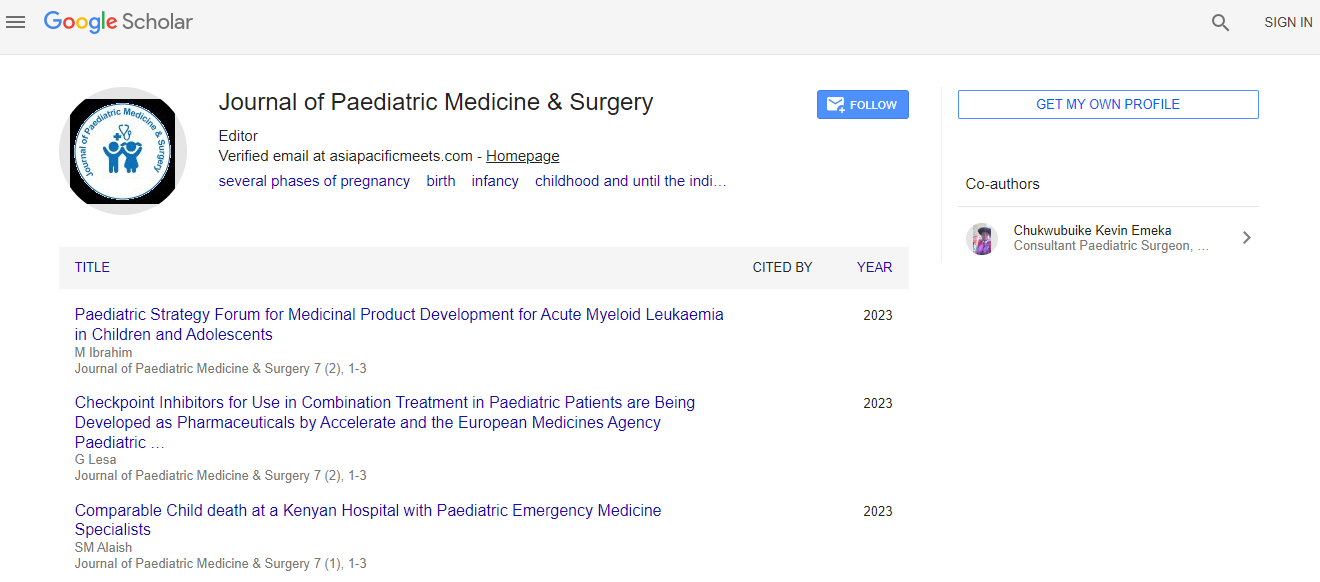Medical Informatics and Pediatrics Health 2019: Basic metabolic disorders in children with diabetic nephropathy - Maidannyk V G - Bogomolets National Medical University
*Corresponding Author:
Copyright: © 2019 . This is an open-access article distributed under the terms of the Creative Commons Attribution License, which permits unrestricted use, distribution, and reproduction in any medium, provided the original author and source are credited.
Abstract
Introduction: The expanded predominance of Type I Diabetes (T1D) has additionally prompted an expansion in the quantity of large scale and microvascular complexities of diabetes, for example, coronary illness, stroke, visual debilitation, diabetic nephropathy (DN) and end stage renal sickness (ESRD). Furthermore, diabetes remains the most well-known purpose behind advancing to ESRD. Diabetic nephropathy (DN) happens in 20–40% of patients with diabetes and is a significant reason for end-stage renal infection (ESRD). The effect on life quality is not kidding and the expense of treatment is high for patients with ESRD. Ceaseless renal sickness likewise connected with untimely mortality in patients with diabetes. Since most patients with type 1 diabetes (T1D) were analysed in adolescence or teenagers, early discovery and counteraction of DN are fundamental.
Microalbuminuria and microalbuminuria have been set up as significant markers of ahead of schedule and dynamic kidney infection in diabetes. Yearly test of pee egg whites to creatinine proportion is proposed for patients with diabetes. Early identification of microalbuminuria and legitimate treatment may opposite or defer the advancement of diabetic kidney disease.
Aim: To consider the degrees of fundamental metabolic issue in youngsters with T1D and at diabetic nephropathy.
Material and Methods: 26 kids I0-16 years of age with T1D and diabetic nephropathy inspected. A partiality of hemoglobin to oxygen and oxidation of lipids identified utilizing the strategy for spectrophotometry. The degrees of cell hypoxia marker HIF-1 estimated utilizing Western Blotting Method. Urinary egg whites creatinine proportion (UACR) was every year kept an eye on morning spot pee. DN was characterized as relentless UACR ≥ 30 mg/g.9 The patients were ordered into 3 gatherings as ordinary albuminuria, microalbuminuria, and microalbuminuria by UACR as indicated by NKF-KDOQI (National Kidney Foundation–Kidney Disease Outcomes Quality Initiative).10 (1) Normal albuminuria was characterized as UACRs were constantly <30 mg/g. A scene of UACR > 30 mg/g which suddenly recouped inside one year was likewise arranged into this gathering; Microalbuminuria was characterized as a UACR of 30–300 mg/g in any event 2 back to back examples in a 3-month stretch; Microalbuminuria was characterized as a UACR of >300 mg/g steadily in any event 2 continuous examples in a 3-month interval.9 As soon as microalbuminuria was recognized and affirmed, ACEI/ARB was controlled with subsequent meet-ups of UACR. A blood test was drawn for organic chemistry yearly after 8-10 h of overnight fasting.11 Biochemistry incorporates serum triglyceride, absolute cholesterol, HDL cholesterol, LDL cholesterol, and creatinine. Evaluated glomerular filtration rate (eGFR) was determined by Schwartz recipe for kids and adolescent,12, 13 or MDRD (the change of diet in renal malady) study condition for grown-up (age ≥ 18 years).14, 15 Blood weight, weight, and stature were estimated at each clinical visit.
Results: In the gathering of kids with the right off the bat analysed T1D significant level of separation of hemoglobin and oxygen when contrasted with control bunch distinguished. In the gathering of youngsters with created diabetic nephropathy the degree of marker was impressively lower than in charge gathering and patients with T1D. Elevated level of intracellular hypoxia assessed in all patients contrasted and the control. HIF-1 levels extensively higher in patients with nephropathy than in youngsters with T1D an expansion in lipid oxidation coefficient relying upon the degree of remuneration of T1D. (81.5%) patients were delegated typical albuminuria, 50 (14.7%) patients as microalbuminuria, and 13 (3.8%) as microalbuminuria. All patients with microalbuminuria or microalbuminuria were treated with angiotensin changing over chemical inhibitors (ACEIs) or angiotensin receptor blockers (ARBs). Among the 50 patients in Group microalbuminuria, 40 (80%) had recuperated ordinary albuminuria under the treatment. Among the 13 patients in Group microalbuminuria, 3 (23.1%) had switched to microalbuminuria under the treatment, yet nobody recuperated ordinary albuminuria. All patients with microalbuminuria were grown-ups (matured 20.5–34.0 years). In 156 youngsters and youths, 10 (6.4%) had microalbuminuria and nobody had microalbuminuria? In 185 grown-up patients, 40 (21.6%) had microalbuminuria, and 13 (7%) had microalbuminuria
Discussion: We have examined the key pointers of essential metabolic and hypoxic issue in kids with T1D and patients with diabetic nephropathy. Further investigation of these markers and its reliance in the system of clutters brought about by the inadequacy of nutrient D3 and disarranges in arrangement of apoptosis control particularly in part of diabetic nephropathy advancing is a promising course of prophylaxis plans creation and diabetic nephropathy treatment.

 Spanish
Spanish  Chinese
Chinese  Russian
Russian  German
German  French
French  Japanese
Japanese  Portuguese
Portuguese  Hindi
Hindi 